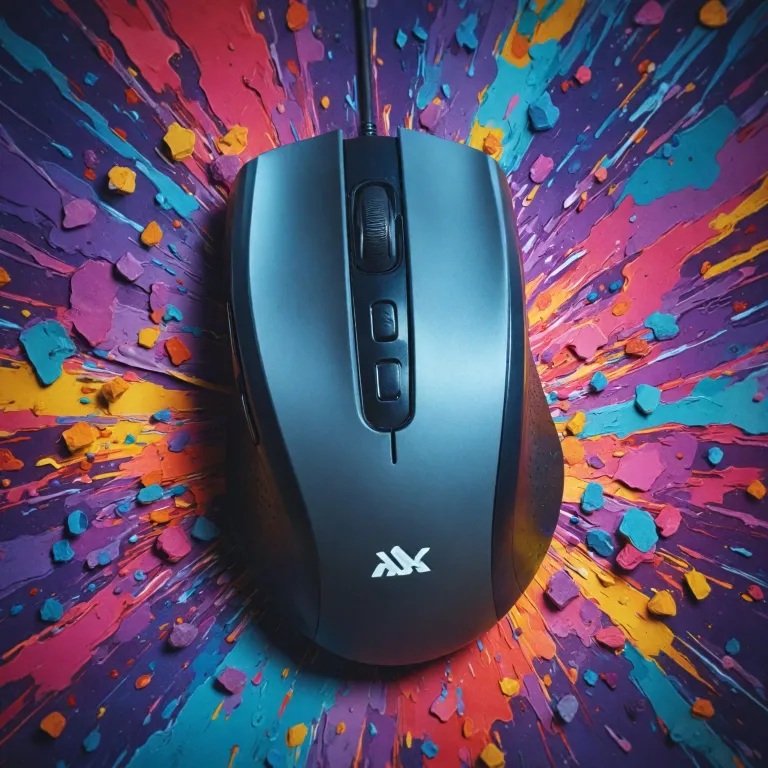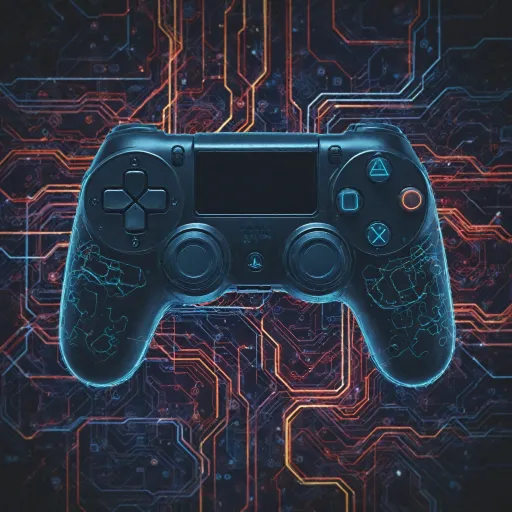
What is Mouse DPI?
Decoding Mouse DPI
Mouse DPI, or dots per inch, is a crucial aspect for any serious gamer, translating the physical movement of your mouse into cursor movement on the screen. The concept of DPI essentially measures how sensitive a mouse is. The higher the DPI, the further the cursor moves when you move the mouse a short distance. This sensitivity setting can greatly influence your gameplay experience, affecting precision and speed when performing actions within a game. For gamers seeking enhanced precision, especially in first-person shooter games, understanding and adjusting DPI settings is vital. This allows you to craft your gaming experience according to your preference and gaming style. While a high sensitivity can speed up your reactions on screen, a lower sensitivity might be preferred for better control in specific scenarios. To ensure your setup aligns with your gaming needs, you may want to explore different DPI settings. Tools like a DPI analyzer can be incredibly helpful to find your mouse's actual DPI. Adjusting these settings can usually be done through the control panel on your Windows computer, or by using specific software linked to your mouse model. Interestingly, the DPI value is just one aspect of a broader mouse sensitivity setting. It's important to consider how your DPI links to mouse sensitivity and how these work together to influence gaming performance. If you're interested in delving deeper into the enhancements like those offered in the thrilling Cyberpunk 2077 Turf Wars arcade game, you can explore the nuances of that game to better understand strategic adjustments and gameplay impact.Why Mouse DPI Matters for Gamers
Why Gamers Should Care About DPI
For gamers, understanding the concept of DPI (dots per inch) is crucial. DPI directly affects how your mouse interacts with the screen, influencing the speed and precision of your movements. A higher DPI setting means the cursor will move further on the screen with less physical movement of the mouse. This can be particularly beneficial in fast-paced gaming scenarios where quick reflexes are essential.
However, it's not just about speed. The right DPI setting can enhance your gaming experience by aligning with your personal preference and play style. Some gamers prefer a lower DPI for greater control and accuracy, especially in games that require precise aiming. Others might opt for a higher DPI to cover more screen distance quickly.
Adjusting your DPI settings can also help reduce fatigue during extended gaming sessions. By finding the optimal balance, you can ensure that your mouse movements are efficient and comfortable, minimizing the need for excessive physical movement.
To make the most of your gaming experience, it's important to check and adjust your DPI settings according to your needs. This involves understanding your mouse model and using the appropriate software or control panel to make changes. For more insights on enhancing your gaming setup, consider exploring this guide on adding textures to your games.
How to Check Your Mouse DPI
Simple Steps to Determine Your Mouse's DPI
Finding out your mouse DPI is a crucial step in optimizing your gaming performance, as discussed earlier. With the right DPI setting, you can control the speed and sensitivity of your mouse movements, giving you an edge in gaming scenarios. Here's how you can check your current mouse DPI with ease.- Check the manufacturer's specifications: Start by visiting the manufacturer's site or check the documentation that came with your mouse. Here you will find the listed DPI range or settings applicable for your specific mouse model.
- Use the Control Panel: On Windows devices, you can access the Mouse settings through the Control Panel. Navigate to the "Devices" section, then "Mouse" settings, to find information on your device's sensitivity.
- DPI Analyzer: Online tools like a DPI analyzer can help you find the actual DPI setting. Simply follow the instructions on the tool's page. By inputting the distance your mouse moves physically and how it correlates with the distance traveled on screen, you can get an accurate measure of your DPI.
- Software Solutions: If your mouse came with software, it often includes a method to check and adjust your DPI settings. Install the app provided by your mouse's brand to gain control over more precise settings.
- Physical DPI Button: Many gaming mice include a dedicated button to change DPI. Clicking this button typically cycles through preset DPI levels, which can often be customized within an associated software.
Adjusting Mouse DPI for Optimal Performance
Optimizing Your Mouse Settings for Peak Gaming
When it comes to gaming, adjusting your mouse DPI settings is essential for performance. A well-tuned DPI can give you the competitive edge you need, enhancing both accuracy and comfort. Here's how you can tweak your mouse settings for the best in-game experience.- Identify Your Preferences: Begin by assessing your gaming style and preferences. Do you thrive on precise sniping or quick defensive maneuvers? Your gameplay can influence the ideal DPI level.
- Use Software Tools: Most gaming mice come with dedicated software that allows you to check mouse and change DPI settings. By installing the appropriate app for your mouse model, you can easily access various DPI adjustments and customize them to your liking.
- Windows Control Panel: For users operating on Windows, adjusting the mouse sensitivity can also be done through the Control Panel. Here, you can find mouse settings and refine the speed and sensitivity to match your physical movement across the screen.
- Physical Adjustments: Many gaming mice have a DPI button that lets you change DPI settings on the fly. Whether you need to increase speed or control for precision, the button mouse feature provides the flexibility to find DPI settings that suit different gaming situations.
Common Tools and Software for DPI Adjustment
Effective Tools and Software to Tweak Your Mouse's DPI
When it comes to adjusting your mouse dpi settings for optimal performance during gaming, harnessing the power of software can make a significant difference. Many gaming mice come with proprietary software from their manufacturers, allowing users to effortlessly change dpi settings and control other features. Here's a look at some of the most popular methods:- Manufacturer Software: The easiest and most reliable way to change your mouse sensitivity settings is by using the software provided by your mouse manufacturer. Brands like Logitech, Razer, and SteelSeries provide specific programs that let you check mouse settings, including dpi sensitivity levels. This software often includes an interface where you can adjust settings with just a few clicks.
- Windows Control Panel Settings: For those using Windows, the "Mouse" section in the Control Panel can help tweak basic sensitivity settings. While it doesn't provide precise dpi adjustments, it allows for some level of control, helpful when specific software is unavailable.
- Online DPI Analyzers: There are several online tools designed to analyze and calibrate your mouse's performance. These web-based solutions can help you determine actual dpi settings by measuring the physical distance your mouse covers versus the movement on the screen.
- Gaming Platforms and Ecosystems: Some gaming platforms offer their own in-client mouse settings adjustments, giving players another layer of control over how their mouse functions during different games. Check out your gaming platform settings to see if there's a companion app or tool available.
Troubleshooting DPI Issues
Finding and Fixing Common DPI-Related Problems
Navigating through issues related to mouse DPI can be tricky, especially when you notice unexpected changes in your mouse sensitivity. Here are some approaches to help you troubleshoot and resolve common DPI issues:- Verify DPI Settings: Start by checking your current DPI settings in your mouse control panel or the specific software provided by your mouse manufacturer. Ensure that the DPI settings match your preference. This will allow you to adjust the mouse sensitivity easily.
- Check for Software Conflicts: Sometimes, newly installed apps or software updates can alter your mouse settings without direct intention. Review any recent changes you've made to your system and consider disabling non-essential software to see if your mouse returns to its desired sensitivity.
- Inspect Physical Mouse Controls: Many gaming mice come equipped with DPI buttons that allow for on-the-fly changes in sensitivity. Be sure to check if someone inadvertently pressed a button that affected the DPI settings. Refer to your mouse model manual to locate these buttons and their functionalities.
- Utilize Online DPI Analyzers: Websites that offer DPI testing can help you determine if your actual DPI matches with what's displayed in your settings. Simply move the mouse across a defined distance on the screen and see how it translates regarding speed.
- Consult Manufacturer Support: If you still encounter issues, reaching out to your mouse manufacturer’s support site can provide more tailored troubleshooting advice. They often have specific links and resources to help address common problems unique to their products.
- Reinstall Mouse Drivers: Over time, drivers can become outdated or corrupted. Reinstall the necessary drivers from the manufacturer's website to ensure all mouse interactions with the system are functioning correctly and the DPI settings are accurately linked to your movements.












